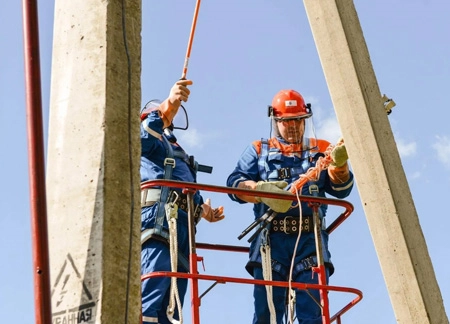
-
 Afrikaans
Afrikaans -
 Albanian
Albanian -
 Amharic
Amharic -
 Arabic
Arabic -
 Armenian
Armenian -
 Azerbaijani
Azerbaijani -
 Basque
Basque -
 Belarusian
Belarusian -
 Bengali
Bengali -
 Bosnian
Bosnian -
 Bulgarian
Bulgarian -
 Catalan
Catalan -
 Cebuano
Cebuano -
 Corsican
Corsican -
 Croatian
Croatian -
 Czech
Czech -
 Danish
Danish -
 Dutch
Dutch -
 English
English -
 Esperanto
Esperanto -
 Estonian
Estonian -
 Finnish
Finnish -
 French
French -
 Frisian
Frisian -
 Galician
Galician -
 Georgian
Georgian -
 German
German -
 Greek
Greek -
 Gujarati
Gujarati -
 Haitian Creole
Haitian Creole -
 hausa
hausa -
 hawaiian
hawaiian -
 Hebrew
Hebrew -
 Hindi
Hindi -
 Miao
Miao -
 Hungarian
Hungarian -
 Icelandic
Icelandic -
 igbo
igbo -
 Indonesian
Indonesian -
 irish
irish -
 Italian
Italian -
 Japanese
Japanese -
 Javanese
Javanese -
 Kannada
Kannada -
 kazakh
kazakh -
 Khmer
Khmer -
 Rwandese
Rwandese -
 Korean
Korean -
 Kurdish
Kurdish -
 Kyrgyz
Kyrgyz -
 Lao
Lao -
 Latin
Latin -
 Latvian
Latvian -
 Lithuanian
Lithuanian -
 Luxembourgish
Luxembourgish -
 Macedonian
Macedonian -
 Malgashi
Malgashi -
 Malay
Malay -
 Malayalam
Malayalam -
 Maltese
Maltese -
 Maori
Maori -
 Marathi
Marathi -
 Mongolian
Mongolian -
 Myanmar
Myanmar -
 Nepali
Nepali -
 Norwegian
Norwegian -
 Norwegian
Norwegian -
 Occitan
Occitan -
 Pashto
Pashto -
 Persian
Persian -
 Polish
Polish -
 Portuguese
Portuguese -
 Punjabi
Punjabi -
 Romanian
Romanian -
 Russian
Russian -
 Samoan
Samoan -
 Scottish Gaelic
Scottish Gaelic -
 Serbian
Serbian -
 Sesotho
Sesotho -
 Shona
Shona -
 Sindhi
Sindhi -
 Sinhala
Sinhala -
 Slovak
Slovak -
 Slovenian
Slovenian -
 Somali
Somali -
 Spanish
Spanish -
 Sundanese
Sundanese -
 Swahili
Swahili -
 Swedish
Swedish -
 Tagalog
Tagalog -
 Tajik
Tajik -
 Tamil
Tamil -
 Tatar
Tatar -
 Telugu
Telugu -
 Thai
Thai -
 Turkish
Turkish -
 Turkmen
Turkmen -
 Ukrainian
Ukrainian -
 Urdu
Urdu -
 Uighur
Uighur -
 Uzbek
Uzbek -
 Vietnamese
Vietnamese -
 Welsh
Welsh -
 Bantu
Bantu -
 Yiddish
Yiddish -
 Yoruba
Yoruba -
 Zulu
Zulu


Nov . 27, 2024 10:59 Back to list
High-Performance Fiberglass Hot Stick for Safe Electrical Maintenance Applications
Understanding Fiberglass Hot Sticks Essential Tools for Electric Utility Workers
Fiberglass hot sticks, also known as insulating rods or sticks, are essential tools used by utility workers in the electric power industry. These tools allow linemen and technicians to perform maintenance and repair tasks on high-voltage equipment from a safe distance, significantly reducing the risk of electrical accidents. The design and material selection of hot sticks are crucial in ensuring both safety and functionality in high-risk environments.
What is a Fiberglass Hot Stick?
A fiberglass hot stick is a long, insulated rod made primarily of fiberglass reinforced plastic (FRP). This material is chosen for its excellent insulating properties, which prevent electrical currents from passing through, ensuring that the worker remains safe. Hot sticks come in various lengths, typically ranging from 6 to 20 feet, and can extend even further with the use of additional sections. This versatility makes them suitable for a range of applications, from routine inspections to emergency repairs on overhead power lines.
Why Fiberglass?
The choice of fiberglass as the primary material for hot sticks offers numerous advantages over traditional materials such as wood or metal. Fiberglass is lightweight, making it easier for workers to handle and maneuver during operations. It is also resistant to impact and is less likely to deform or break under stress. Additionally, fiberglass does not conduct electricity, which is paramount when working near live wires. Its non-corrosive properties ensure durability, especially when exposed to outdoor elements such as rain, humidity, and extreme temperatures.
Key Features of Fiberglass Hot Sticks
1. Insulation Quality The primary purpose of a hot stick is electrical insulation. High-quality fiberglass hot sticks provide superior dielectric strength, ensuring that they can safely withstand high-voltage operations without breakdown.
2. Lightweight Design The lightweight nature of fiberglass allows workers to easily manage the stick during lengthy tasks, reducing fatigue and increasing efficiency on the job.
fiberglass hot stick

4. Durability Built to last, fiberglass hot sticks resist wear from corrosive elements and UV exposure, making them excellent tools for outdoor utility work.
5. Safety Features Many hot sticks are equipped with safety grips and tapered ends to enhance handling and stability when in use.
Operational Use of Hot Sticks
Utility workers employ fiberglass hot sticks in various scenarios, including but not limited to
- Switching Operations Hot sticks allow workers to operate switches on overhead transmission lines without being in close proximity to high voltage, thereby minimizing risk.
- Troubleshooting Technicians can use hot sticks with attached probes to measure voltage or diagnose issues, all while maintaining safe distances from live lines.
- Emergency Situations In emergency responses, such as storm damage repair, hot sticks enable immediate action without putting crew members at risk.
Conclusion
Fiberglass hot sticks are invaluable tools that enhance safety and efficiency for utility workers operating in high-voltage environments. Their unique properties, including lightweight design, excellent insulation, and durability, make them indispensable in ensuring the safety of workers while they perform critical tasks. As electricity continues to power our world, tools like fiberglass hot sticks will remain at the forefront of electrical maintenance and safety practices, helping to prevent accidents and ensure the reliable delivery of energy. Understanding and maintaining these tools is crucial for all electric utility professionals.
Latest news
Understanding Earth Wiring and Grounding: Essential Components for Electrical Safety
NewsAug.15,2025
The Ultimate Guide to Cable Pulling Tools and Equipment for Efficient Installations
NewsAug.15,2025
Streamline Your Projects with Advanced Cable Pulling Equipment
NewsAug.15,2025
Simplify Cable Installation with Advanced Cable Pulling Tools and Equipment
NewsAug.15,2025
Essential Guide to Link Sticks and Hot Sticks for Electrical Safety and Line Work
NewsAug.15,2025
Efficient Solutions for Cable Installation: Your Guide to Cable Pulling Winches and Equipment
NewsAug.15,2025








